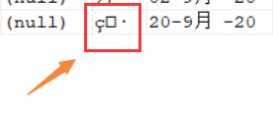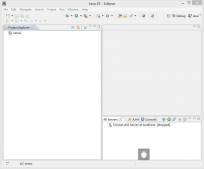在以往的 tomcat 项目中,一直习惯用 ant 打包,使用 build.xml 配置,通过 ant -buildfile 的方式在机器上执行定时任务。虽然 spring 本身支持定时任务,但都是服务一直运行时支持。其实在项目中,大多数定时任务,还是借助 linux crontab 来支持,需要时运行即可,不需要一直占用机器资源。但 spring boot 项目或者普通的 jar 项目,就没这么方便了。
spring boot 提供了类似 commandlinerunner 的方式,很好的执行常驻任务;也可以借助 applicationlistener 和 contextrefreshedevent 等事件来做很多事情。借助该容器事件,一样可以做到类似 ant 运行的方式来运行定时任务,当然需要做一些项目改动。
1. 监听目标对象
借助容器刷新事件来监听目标对象即可,可以认为,定时任务其实每次只是执行一种操作而已。
比如这是一个写好的例子,注意不要直接用 @service 将其放入容器中,除非容器本身没有其它自动运行的事件。
|
1
2
3
4
5
6
7
8
9
10
11
12
13
14
15
16
17
18
19
20
21
22
23
24
25
26
27
28
29
30
31
32
33
34
35
36
37
38
39
40
41
42
43
44
45
46
47
48
49
50
51
52
53
54
55
56
57
58
59
60
61
62
63
64
65
66
67
68
69
70
71
72
73
74
75
76
77
78
79
80
81
82
83
84
85
86
87
88
89
90
91
92
93
94
95
96
97
98
99
100
101
102
103
104
105
106
107
108
109
110
111
112
113
114
115
116
117
118
119
120
121
122
123
|
package com.github.zhgxun.learn.common.task;import com.github.zhgxun.learn.common.task.annotation.scheduletask;import lombok.extern.slf4j.slf4j;import org.springframework.boot.springapplication;import org.springframework.context.applicationcontext;import org.springframework.context.applicationlistener;import org.springframework.context.event.contextrefreshedevent;import java.lang.reflect.invocationtargetexception;import java.lang.reflect.method;import java.util.list;import java.util.stream.collectors;import java.util.stream.stream;/** * 不自动加入容器, 用于区分是否属于任务启动, 否则放入容器中, spring 无法选择性执行 * 需要根据特殊参数在启动时注入 * 该监听器本身不能访问容器变量, 如果需要访问, 需要从上下文中获取对象实例后方可继续访问实例信息 * 如果其它类中启动了多线程, 是无法接管异常抛出的, 需要子线程中正确处理退出操作 * 该监听器最好不用直接做线程操作, 子类的实现不干预 */@slf4jpublic class taskapplicationlistener implements applicationlistener<contextrefreshedevent> { /** * 任务启动监听类标识, 启动时注入 * 即是 java -dspring.task.class=com.github.zhgxun.learn.task.testtask -jar learn.jar */ private static final string spring_task_class = "spring.task.class"; /** * 支持该注解的方法个数, 目前仅一个 * 可以理解为控制台一次执行一个类, 依赖的任务应该通过其它方式控制依赖 */ private static final int support_method_count = 1; /** * 保存当前容器运行上下文 */ private applicationcontext context; /** * 监听容器刷新事件 * * @param event 容器刷新事件 */ @override @suppresswarnings("unchecked") public void onapplicationevent(contextrefreshedevent event) { context = event.getapplicationcontext(); // 不存在时可能为正常的容器启动运行, 无需关心 string taskclass = system.getproperty(spring_task_class); log.info("scheduletask spring task class: {}", taskclass); if (taskclass != null) { try { // 获取类字节码文件 class clazz = findclass(taskclass); // 尝试从内容上下文中获取已加载的目标类对象实例, 这个类实例是已经加载到容器内的对象实例, 即可以获取类的信息 object object = context.getbean(clazz); method method = findmethod(object); log.info("start to run task class: {}, method: {}", taskclass, method.getname()); invoke(method, object); } catch (classnotfoundexception | illegalaccessexception | invocationtargetexception e) { e.printstacktrace(); } finally { // 需要确保容器正常出发停止事件, 否则容器会僵尸卡死 shutdown(); } } } /** * 根据class路径名称查找类文件 * * @param clazz 类名称 * @return 类对象 * @throws classnotfoundexception classnotfoundexception */ private class findclass(string clazz) throws classnotfoundexception { return class.forname(clazz); } /** * 获取目标对象中符合条件的方法 * * @param object 目标对象实例 * @return 符合条件的方法 */ private method findmethod(object object) { method[] methods = object.getclass().getdeclaredmethods(); list<method> schedules = stream.of(methods) .filter(method -> method.isannotationpresent(scheduletask.class)) .collect(collectors.tolist()); if (schedules.size() != support_method_count) { throw new illegalstateexception("only one method should be annotated with @scheduletask, but found " + schedules.size()); } return schedules.get(0); } /** * 执行目标对象方法 * * @param method 目标方法 * @param object 目标对象实例 * @throws illegalaccessexception illegalaccessexception * @throws invocationtargetexception invocationtargetexception */ private void invoke(method method, object object) throws illegalaccessexception, invocationtargetexception { method.invoke(object); } /** * 执行完毕退出运行容器, 并将返回值交给执行环节, 比如控制台等 */ private void shutdown() { log.info("shutdown ..."); system.exit(springapplication.exit(context)); }} |
其实该处仅需要启动执行即可,容器启动完毕事件也是可以的。
2. 标识目标方法
目标方法的标识,最方便的是使用注解标注。
|
1
2
3
4
5
6
7
8
9
10
11
12
13
|
package com.github.zhgxun.learn.common.task.annotation;import java.lang.annotation.documented;import java.lang.annotation.elementtype;import java.lang.annotation.retention;import java.lang.annotation.retentionpolicy;import java.lang.annotation.target;@retention(retentionpolicy.runtime)@target(elementtype.method)@documentedpublic @interface scheduletask {} |
3. 编写任务
|
1
2
3
4
5
6
7
8
9
10
11
12
13
14
15
16
17
18
19
20
21
22
23
24
25
26
27
28
29
30
31
32
33
34
35
36
37
38
39
40
41
42
43
44
45
46
47
48
49
50
51
52
53
54
55
56
57
58
59
60
61
|
package com.github.zhgxun.learn.task;import com.github.zhgxun.learn.common.task.annotation.scheduletask;import com.github.zhgxun.learn.service.first.launchinfoservice;import lombok.extern.slf4j.slf4j;import org.springframework.beans.factory.annotation.autowired;import org.springframework.stereotype.service;import java.util.concurrent.timeunit;@service@slf4jpublic class testtask { @autowired private launchinfoservice launchinfoservice; @scheduletask public void test() { log.info("start task ..."); log.info("launchinfolist: {}", launchinfoservice.findall()); log.info("模拟启动线程操作"); for (int i = 0; i < 5; i++) { new mytask(i).start(); } try { timeunit.seconds.sleep(3); } catch (interruptedexception e) { e.printstacktrace(); } }}class mytask extends thread { private int i; private int j; private string s; public mytask(int i) { this.i = i; } @override public void run() { super.run(); system.out.println("第 " + i + " 个线程启动..." + thread.currentthread().getname()); if (i == 2) { throw new runtimeexception("模拟运行时异常"); } if (i == 3) { // 除数不为0 int a = i / j; } // 未对字符串对象赋值, 获取长度报空指针错误 if (i == 4) { system.out.println(s.length()); } }} |
4. 启动改造
启动时需要做一些调整,即跟普通的启动区分开。这也是为什么不要把监听目标对象直接放入容器中的原因,在这里显示添加到容器中,这样就不影响项目中类似 commandlinerunner 的功能,毕竟这种功能是容器启动完毕就能运行的。如果要改造,会涉及到很多硬编码。
|
1
2
3
4
5
6
7
8
9
10
11
12
13
14
15
16
17
18
19
|
package com.github.zhgxun.learn;import com.github.zhgxun.learn.common.task.taskapplicationlistener;import org.springframework.boot.autoconfigure.springbootapplication;import org.springframework.boot.builder.springapplicationbuilder;@springbootapplicationpublic class learnapplication { public static void main(string[] args) { springapplicationbuilder builder = new springapplicationbuilder(learnapplication.class); // 根据启动注入参数判断是否为任务动作即可, 否则不干预启动 if (system.getproperty("spring.task.class") != null) { builder.listeners(new taskapplicationlistener()).run(args); } else { builder.run(args); } }} |
5. 启动注入
-dspring.task.class 即是启动注入标识,当然这个标识不要跟默认的参数混淆,需要区分开,否则可能始终获取到系统参数,而无法获取用户参数。
|
1
|
java -dspring.task.class=com.github.zhgxun.learn.task.testtask -jar target/learn.jar |
以上就是本文的全部内容,希望对大家的学习有所帮助,也希望大家多多支持服务器之家。
原文链接:https://segmentfault.com/a/1190000017946999














